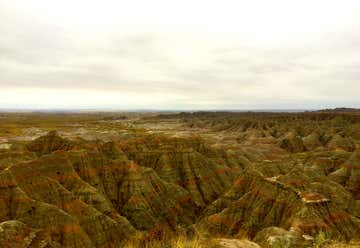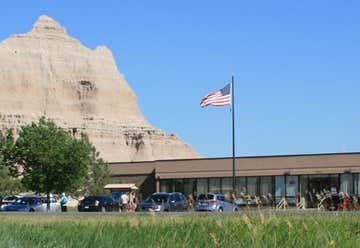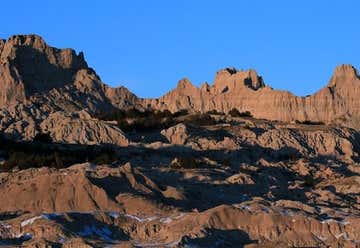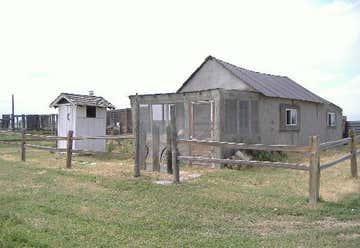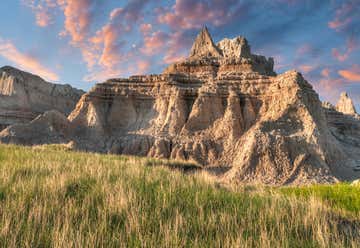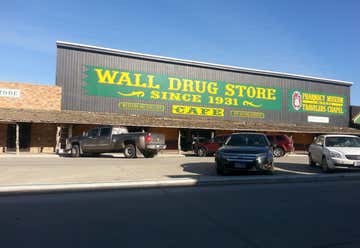Badlands National Park is one of the most underrated National Parks in the whole system. Sure, it doesn't have the jaw-drop factor of the Grand Canyon, or the one-of-a-kind natural features of Yellowstone, but it does have its own unique history, culture, wildlife, and special features that make it worth road tripping out to see. Still not sure? Here are just a few of the best-kept secrets of the Badlands to convince you!
Looking for more tips for your trip to Zion? We've got you covered.
Some tips for visiting Badlands National Park:
-The Badlands are a stunning, rugged landscape-- but they're not easy to photograph. The best time to take pictures of the hills and stone formations is in the soft morning light, or towards the end of the day. That way, the light is hitting the hills at an angle that better highlights them and their crevices and colors, as opposed to beating straight down on them and washing them out. -Another one of the coolest features about Badlands National Park is its location. It's within 100 miles of Mount Rushmore and the Crazy Horse Memorial, and is even closer to other iconic roadside attractions that get their own mentions in this guide. You're basically smack-dab in the middle of classic road trip heaven, so plan to spend time exploring the area! -If you only have a short amount of time to spend here, drive SD-240, also known as the Badlands Loop State Scenic Byway. It's only 38 or so miles long, but you'll pass by 15 scenic overlooks, a visitor center, 8 trails, and numerous natural features.
The park's Ben Reifel Visitor Center has an awesome Fossil Prep Lab that educates tourists on the region's incredible prehistoric features. Fossils are wildly abundant here. In fact, in 2010, a seven-year-old girl found an incredibly rare and very well preserved saber tooth tiger skull. She, thankfully, reported her find to the rangers, which helped in the discovery of even more fossils in the surrounding area. Think about it... you could be the next person to find an ancient, maybe even extinct, animal's remains!
Cedar Pass Lodge Campground offers tent and RV sites to those who want to spend the night immersed in the rugged beauty of the Badlands. Shaded picnic tables, hookups, and a convenient location near both Cedar Pass Lodge (where you can eat at the restaurant and buy supplies) and the park's amphitheater, where evening ranger programs take place, make this a perfect camping option.
The Badlands are located in a pretty remote part of South Dakota, so dining options can seem few and far between. Luckily, there's always the Wagon Wheel Bar and Grill. It's nothing fancy (unless you consider the fact that they do have some craft beers on their menu to be "fancy") but you don't need fancy when you're having a great time enjoying cheeseburger pizza and chatting with the locals all night!
Go full Badlands and rough it in the Badlands 1880 Homestead Cabin. It comes with beds, an outhouse, a porch... and not much else. Located a mile away from any other sign of civilization, it's a chance to live (sort of) like a pioneer-- except you can bring some camping supplies to make life a little easier.
At 10 miles round trip, this is the longest trail in the park and offers the most to see. You'll pass by badlands formations as you cross the park on this hike, which ends at a .25 mile interpretive boardwalk that has replicas of the fossils of now-extinct creatures before taking you back to the trailhead.
Historically, the badlands were settled by enterprising pioneers who were able to make the most out of the rugged landscape by living in sod homes, exactly like the one you'll find at Prairie Homestead. One of the few original remaining sod houses in the country, the Prairie Homestead is preserving the unique way of life these pioneers developed. Slip into a period costume and tour the sod house, outhouse, barn, chicken coop, and other buildings on the homestead to better understand and appreciate just how easy we have it today.
South Dakota is the setting for one of America's most incredible top secret projects: a field of 150 Minuteman II nuclear missiles, armed and ready for launch at a moment's notice during the Cold War. In the 1990's, the whole site was unarmed and preserved for future generations to visit and learn from as the Minuteman Missile National Historic Site; it's currently the only National Parks System unit dedicated to Cold War history.
The Ranch Store of The Badlands will sell you a bag of peanuts in the shell for 50 cents, which you can feed to the prairie dogs that live outside the shop-- they'll run right up to you! It's seriously fun to watch them, since they're so goofy. Once you've had your fill of the little critters, head into the 1950's-era souvenir shop and stock up on supplies... and make sure to get a picture in front of the giant prairie dog statue outside the store before you leave!
One thing that the Badlands is great at is raising cattle, so take advantage of the fresh steaks around here and stop at the Two Bit Saloon & Steakhouse to have them cook you a juicy t-bone or an order of prime rib. The atmosphere is that of a totally authentic Western steakhouse, and the locals come here for the hearty dinners, cold drinks, and great service.
Wall Drug might have started off as a simple drug store in a tiny little town, but it quickly grew into a full-fledged tourist attraction after the owner's wife came up with a brilliant plan to offer free ice water to tourists on their way to Mount Rushmore. The pharmacy evolved into a virtual mall, complete with a Western art gallery, a chapel, souvenir shops, a soda fountain and restaurant, an arcade, and kitschiness galore. There are huge statues dotted around, including a giant jackalope, an apatosaurus, a tepee, a stagecoach, and more than a few cowboys and outlaws. Their advertising campaign pretty much set the standard for tourist attractions: you can find billboards advertising Wall Drug lining the highways-- especially along I-90 between Minnesota and Billings, Montana.
But, Wall Drug more than a tourist trap-- it's an icon. It brings in 2 million visitors each year... to a town that people would ordinarily drive right past without a second thought. But the fact that, even though it has grown into a massive complex of kitsch and touristy cliches, they'll still serve you a free cup of ice water when you pull up, really does say it all.
Badlands is located near Wounded Knee, where the 1890 massacre of Lakota Indians by the US Army took place. In fact, the last Ghost Dance took place in the Stronghold Unit of Badlands National Park, the park's Southern half. The Ghost Dances were religious ceremonies put on by Paiute prophet Wovoka, who was determined to keep the US Government from taking Lakota lands. The last Ghost Dance took place just days before the bloody battle at Wounded Knee.
The Wounded Knee Museum in Wall, SD is a great way to learn about this important event in American history. It features exhibits that tell the story of the massacre, and provides tons of great info about the Lakotas.
The Stronghold Unit of Badlands National Park is co-managed by the NPS and the Oglala Lakota tribe, so stopping by the museum before heading to that part of the park is a good way to learn about Lakota culture.
If you want to see a ton of prairie dogs in their natural habitat, then head to Badlands' Roberts Prairie Dog Town. Go at mid-day to see them at their most active: there are hundreds here, and even though many stay underground, there are always a few popping up, chatting, and bustling around. Don't feed these guys, or get too close, though. They're in the park and they're wild animals, so allow them to enjoy their natural habitat.
Summer is a popular time to visit the Badlands, but keep in mind that there are few trees and little shade to enjoy when it gets hot, and that weather can be unpredictable-- afternoon thunderstorms are quite common. There's a big motorcycle rally in nearby Sturgis in early August that can cause crowds and price spikes. Spring and fall are super pleasant as well, with lower temps and fewer crowds, and even though some facilities and roads close in the winter, the landscape is even more intriguing covered in snow.

